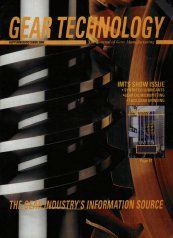For eight days every other year, the sponsor of the International Manufacturing Technology Show (IMTS), the Association for Manufacturing Technology (AMT), strives to turn Chicago's McCormick Place into a "productivity marketplace," the largest and most completer display and demonstration of manufacturing technology ever seen in the Americas. If the growth of the show is any indicator, that effort has been very successful indeed. With over 1.4 million square feet of exhibit space taking up all five levels and all three exhibit halls of McCormick Place, each level would rank as one of the nation's 200 largest trade shows. That wasn't always the size or scope of the show. Its inception, while impressive for the time, was humble by today's standards.
